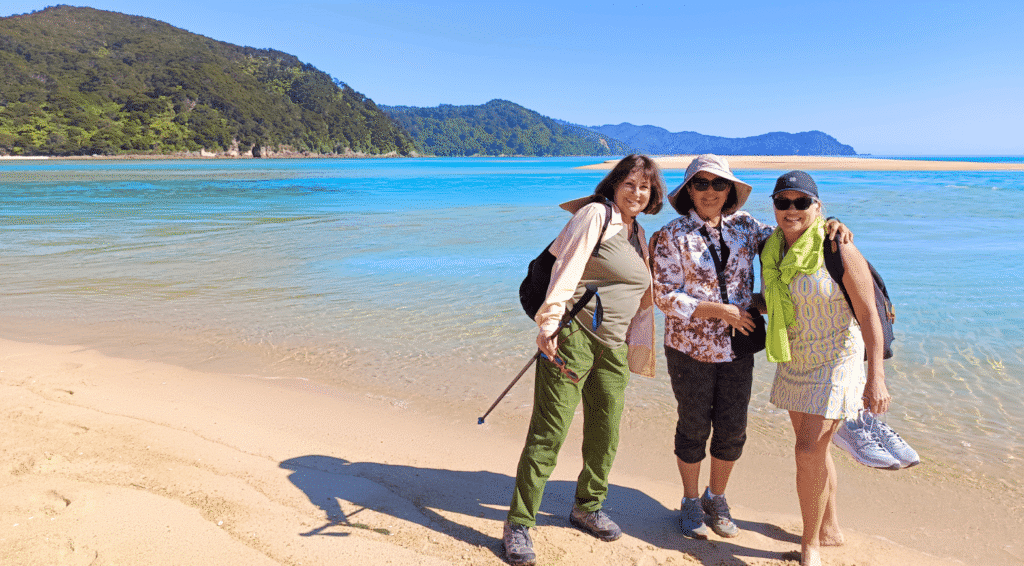Often called the world’s most beautiful car journey, Norway’s Atlantic Road is the ultimate Scandinavian road trip.
The route snakes across rocky islets and soaring bridges – with views of the wild ocean and craggy mountains most of the way.
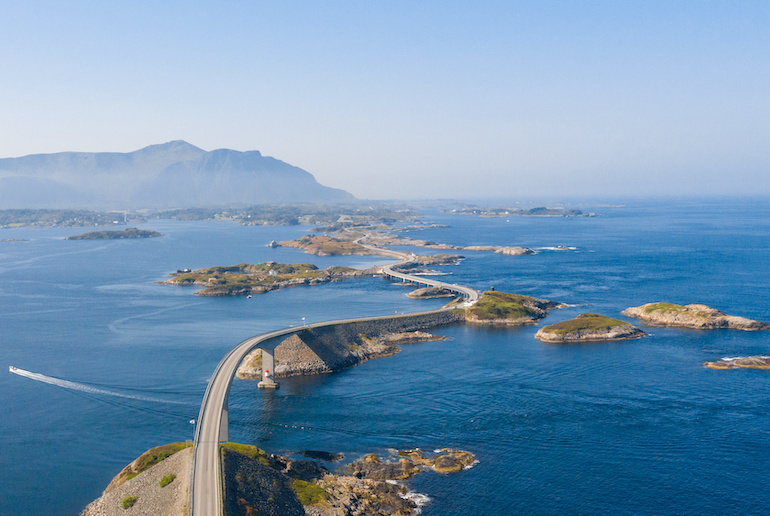
This road over the sea encompasses eight dramatic bridges that link the islands and islets of Averøy with Norway’s mainland west coast across the mouth of the Kvernesfjord.
What is the Atlantic Road?
The Atlantic Road, or Atlanterhavsvegen, is one of Norway’s designated scenic routes, where the journey itself is more important than the destination.
Due to the harsh weather conditions and geography of the region, the road took six years to build, finally opening in 1989.

The building of the route and its eight bridges was so challenging and innovative that it was designated Norway’s ultimate “construction project of the 20th century” in 2005.
Where does the route go to and from?
The core, dramatic part of the Atlantic Road runs for just five miles along route 64 from the village of Kårvåg on the island of Averøy to Vervang on the mainland.
But it also forms part of a longer driving route from the town of Kristiansund in the north to the pretty fishing village of Bud in the south.
This 40-mile scenic route takes about an hour to drive across the island of Averøy and along the indented, rocky Norwegian coastline.
Why you should drive the Atlantic Road
The views, the sea, the bridges, the scenery and the engineering – to name but five reasons why the Atlantic Road is worth driving along.
You don’t have to be an architect to appreciate this marvel of engineering, with huge bridges soaring over the sea.
And the scenery it passes is pretty spectacular too – snow-clad mountains, 17 islets and skerries, rocky sea cliffs and the odd picturesque fisherman’s cottage.
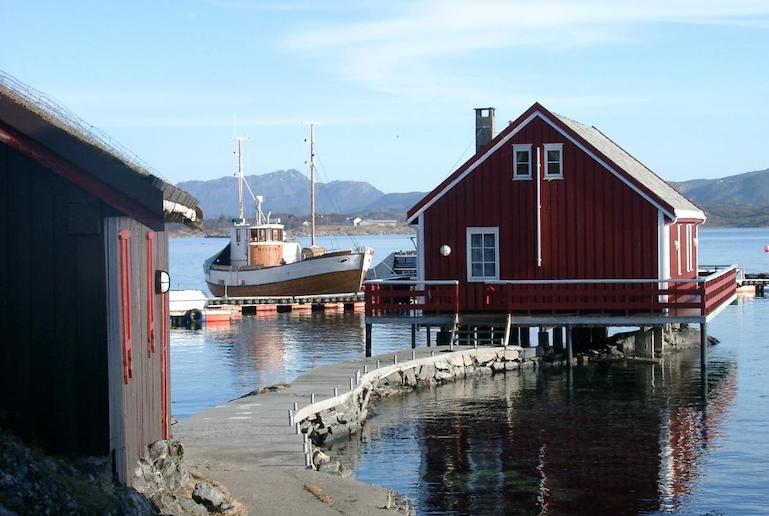
But don’t make the mistake of driving straight though – what we like the best is stopping off at viewpoints, getting out of the car and admiring the scenery.
That said, anyone with vertigo or gephyrophobia (a fear of driving over bridges – yes it’s a real thing!) may want to give it a miss.
It’s often included on lists of the world’s most dangerous roads, which we think is a bit of an exaggeration, but it certainly can feel quite scary driving along it in bad weather.
When’s the best time of year to drive the Atlantic Road?
The road is open year-round in all weathers, though very occasionally the Storseisundet Bridge closes due to severe gales.
Because of the warming effects of the Gulf Stream on this stretch of coast, the road is rarely badly effected by snow and ice.
Despite the gales, autumn is the most popular time to drive along the road, when powerful gusts of wind lash against the bridges and the waves are high.
It’s certainly the most dramatic time of year, when the waves crash over the road, spraying it with water and sea foam.
Are there tolls?
When the road was originally built it was planned to charge a toll for 15 years, until the initial constructions costs – 122 million NOK– were paid off.
However, the road proved so popular that the costs paid off within ten years, so it is now completely free to drive.
Can you do the Atlantic Road by public transport?
Strangely, the Atlantic Road was originally designed to be a railway, but that was never built and so there are no trains along the route.
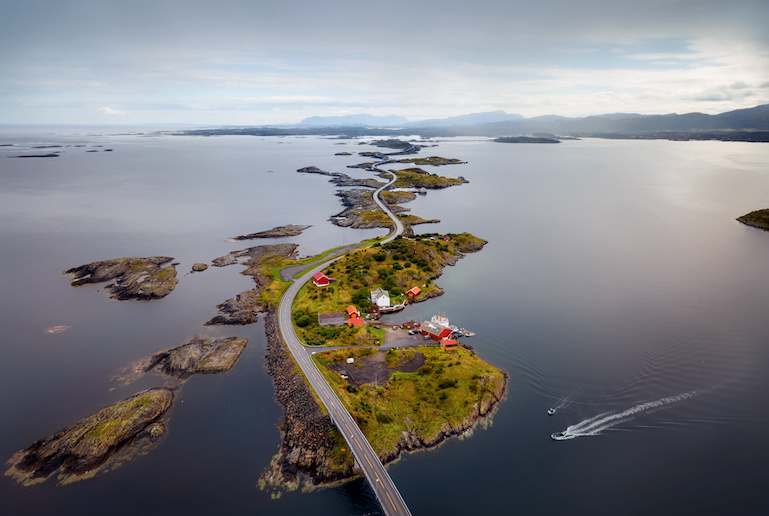
Bus #510 runs from Kårvåg along the Atlantic Road, though since this is a public bus it doesn’t stop at the walkways and there’s no opportunity to get off and explore.
If you’d rather travel the road at leisure, this bus tour from Molde drives along the dramatic route and includes a stop where you can get off and have a walk. It also takes in the pretty fishing village of Bud.
Cycling the Atlantic Road
Designated Norway’s most beautiful bike ride in 2010, the Atlantic Road is certainly cyclable and very scenic.
It’s part of Norway’s National Cycle Route #1, a 200km-long bike route called the Atlantic Way, that runs between Kristiansund and Ålesund.
You can, of course, just do the five-mile Atlantic Road stretch. It’s not very strenuous and is tarmac all the way, but there’s no dedicated cycle path and traffic can be heavy at busy times.
5 of the best spots to stop on the Atlantic road
1) The Eldhusøya walkway
There are five rest stops along the Atlantic Route, but if you only stop at one make it the Eldhusøya walkway.
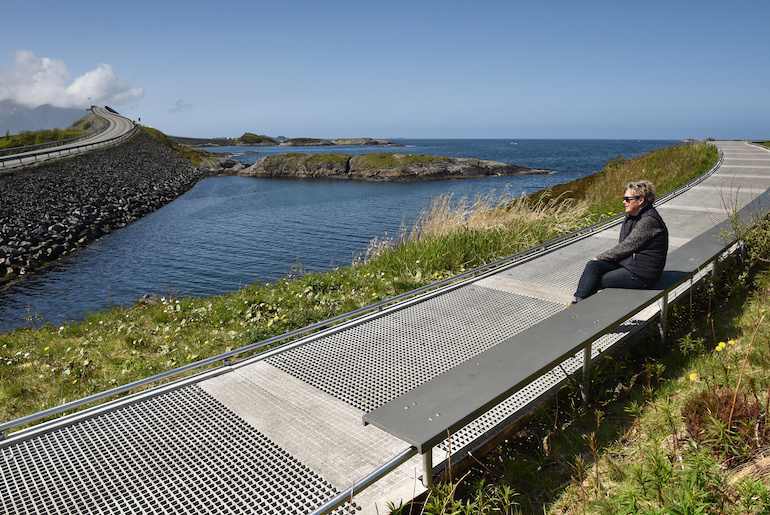
Suspended above the rocks and marshland below, this elevated circular walkway snakes out towards the sea giving great views of the road, the sea and the Storseisundet Bridge.
At 260 metres long and 23 metres high, the cantilevered Storseisundet Bridge is the longest along the Atlantic Road.
It looks perhaps more dramatic than it actually is when viewed from Eldhusøya, since an optical illusion makes it look steeper than it is and gives the impression that it switchbacks on itself.
This bus tour from Molde stops off at the Eldhusøya walkway for some great photo opportunities.
2) Go fishing on the Myrbærholmen bridge
There are two dedicated cantilevered walkways on the Myrbærholmen bridge, so that you can fish in safety away from the road.
These accessible fishing platforms are open to anyone and are free to use, but you’ll need to bring your own rods and bait.
Mackerel, pollock, sea trout and sometimes even cod can all be caught at this popular angling spot.
3) Spot seals and whales at Strømsholmen
The first island on the Atlantic Road as you approach from the west is Strømsholmen, home to the Strømsholmen Seasportcenter.
The long-established water activity centre runs orca- whale- and seal-spotting trips, as well as snorkelling with orca and diving in the clear, cold waters off the Atlantic Road.
They also rent out kayaks and mountain bikes so you can go off exploring on your own.
4) Check out the Columna Transatlantica
Looking out over the sea from the mainland at the western end of the Atlantic Road, the Columna Transatlantica is an interesting artwork by Norwegian artist Jan Freuchen.
The white sculpture consists of 40 pieces of broken marble column that have been laid out in a winding and broken line over the rocks at the sea edge at Hågå.
Spreading for about 90 metres across one of the islets, it signifies the importance of the sea to Norway in its communications with the rest of the world.
The artwork has been controversial, with some critics saying it looks like toothpaste, and others calling it ugly.
We say this: the setting is beautiful anyway, so go and have a look for yourself and make up your own mind.
5) See the stave church at Kvernes
Norway’s only stave church to be built in the fifteenth century, the Kvernes stave church is a beautiful wooden building a short distance from the Atlantic Road.
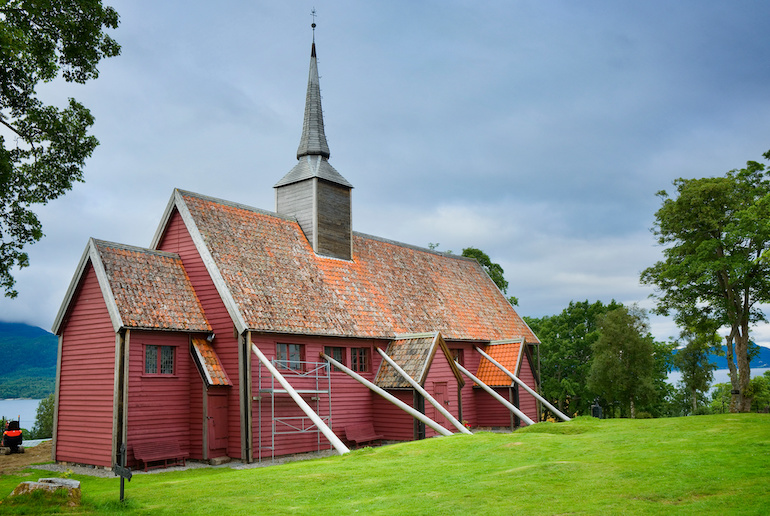
Its exterior may not be as ornate as some of Norway’s other stave churches – Borgund, for example – but its setting at the junction of the Kvernes and the Frei fjordsmore than makes up for this.
Got more time? Here are 10 more things worth doing
- Hang out on Håholmen. Take the boat from Geitøya on the Atlantic Road to the island of Håholmen, where you can stay in the lovely Håholmen hotel in a former fishing village.
- Do yoga on the Atlantic Road. Om Stavika runs outdoor yoga classes on various beaches along the Atlantic Road.
- Chill out on the beach at Farstadsanden, a long sandy stretch that curves around a bay.
- Stay in the Hustadvika Havhotell, with beautiful views out over the sea.
- Walk out to the Nordneset Lighthouse for a picnic: it’s a 5km round-walk from Farstad Beach.
- Eat fresh fish and chips at the Bjartmars Favorittkro restaurant, which serves the best fish and seafood along the Atlantic Road.
- Learn all about the history of the Atlantic Road and its surroundings at the Bud Coastal Museum.
- Take in the views from the Askevågen viewing area, a glass box suspended over the rocks and sea.
- Take a boat trip from Bud. Bud Camping rents out boats and runs sea-fishing tours.
- Hike up Mount Stemshesten for beautiful views over the coastline and islands.
